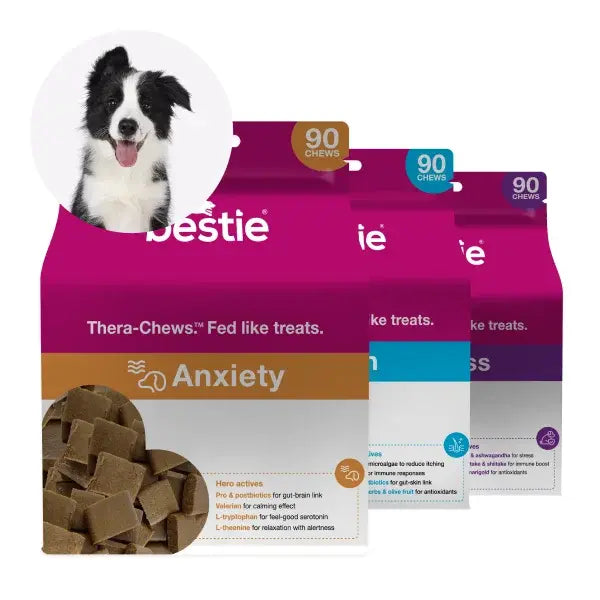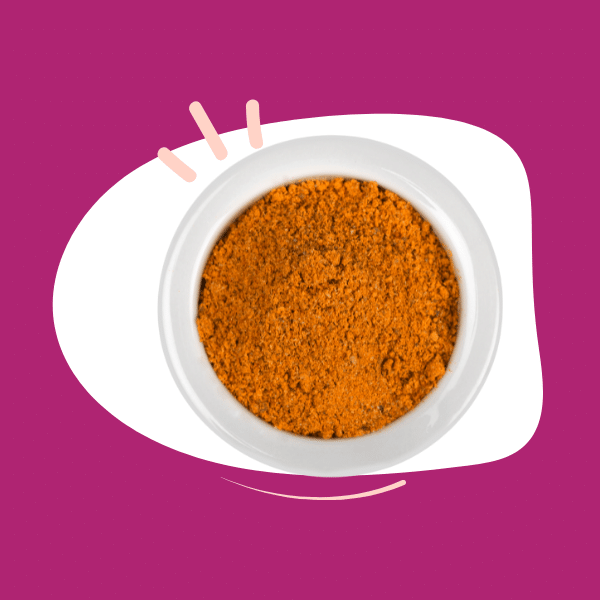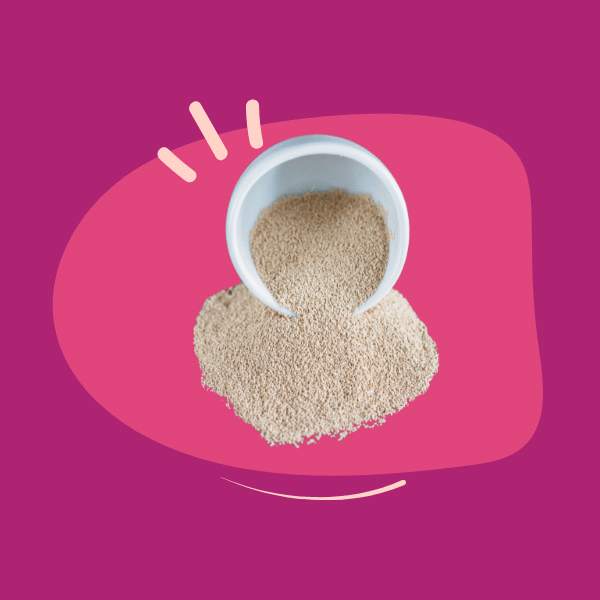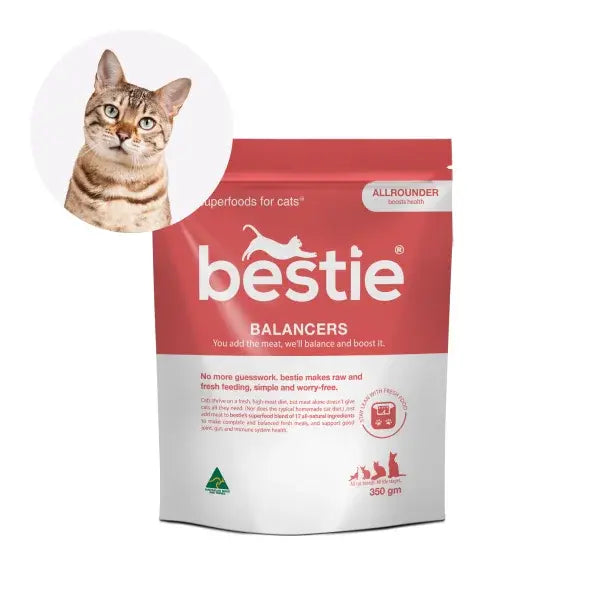In a nutshell:
-
Nearly 80% of dogs over the age of eight are affected by osteoarthritis, a multifactorial disease causing the joints to deteriorate.
-
Including certain probiotics, omega-3 fatty acids, and antioxidants in your dog’s diet has a significant role in helping prevent excess cartilage damage.
-
Probiotic strains acidophilusand L. paracasei have a promising role in reducing inflammatory mediators (TNF-α and IL-6) and inhibiting the proinflammatory COX pathway.
-
Nutraceuticals like green tea extract, Boswellia, White Peony, and Gingko Bilboa function as antioxidants and suppress inflammation through AMPK (AMP-activated protein kinase) signalling to support joint function.
Ageing is a part of life, but that doesn't mean we shouldn’t try and age well. With age, we start to see issues regarding mobility. Long walks become more straining, stairs become more tiring, and energy levels decrease. As pet owners, we can help promote the longevity and well-being of our pets.
Let’s dig deeper and talk about how you can help maintain good joint health and mobility in your pets.
What happens to your dog’s joints as they age?
We (including our dogs) often take healthy joints for granted. The only difference is that your dog can’t understand the importance of joint health and the methods behind supporting mobility.
To understand what happens to joints as they age, we first need to clarify what makes a joint healthy.
Healthy joints and mobility
Where two bones interact, you can find a joint. Dogs use a combination of fibrous, cartilaginous, and synovial joints to support the body’s structure and produce movements – the latter being most involved in mobility.
Synovial joints are composed of two opposing bones lined with hyaline articular cartilage, a joint capsule supported by ligaments, and a synovial membrane that produces synovial fluid. This synovial fluid is an ultrafiltrate of blood plasma and functions to lubricate these joints, allowing them to move smoothly (Tamer, 2013). A major component of synovial fluid that lends to its lubricating properties is a molecule called hyaluronan – a sugar molecule with an essential role in cell migration, cartilage repair, and shock absorption (Kobayashi et al., 2020).
A healthy joint has a full range of motion without resistance. This means we need:
- A smooth cartilage surface that is able to absorb impact.
- Viscous synovial fluid that retains high concentrations of hyaluronan and lacks inflammatory mediators.
Joint damage in ageing dogs
Our joints handle a lot of wear and tear. For example, the joint’s surface is exposed to pressure every time a dog jumps and lands.
The problem with joints is that they’re highly avascular. This means there is very little blood supply, making it difficult for the body to repair damage efficiently since access to nutrients is low. As the joint surface is exposed to more wear and tear, this lack of blood supply also makes it difficult for the body to remove damaged components and inflammatory mediators. This accumulation of debris leads to joint disease - an inflammatory condition that causes pain, swelling, stiffness, loss of function or mobility, and eventually, cartilage breakdown (Bhathal et al., 2017).
With this in mind, veterinary researchers have identified critical dietary supplements that can help support your dog’s joints throughout its lifetime. By utilising information from evidence-based studies, pet parents can take a proactive approach to support joint health and maintain mobility in our dogs from an early age.

What is the most common joint disease in dogs?
Different dog breeds are predisposed to a variety of diseases affecting the joints. Smaller breeds, such as the pug, chihuahua, and bichon, are at higher risk of patellar luxation – a condition that affects joint stability due to hypermobility of the knee cap (Di Dona et al., 2018). In larger breeds, we see an increased prevalence of hip dysplasia that affects nearly 16% of all dogs (Loder & Todhunter, 2017).
However, the most common disease affecting the joints in dogs is osteoarthritis – a condition caused by progressive deterioration of the articular cartilage and accumulation of debris within the synovial fluid. The onset of osteoarthritis is often secondary to trauma or excessive joint wear and is associated with severe pain and loss of mobility in ageing dogs (Anderson et al., 2018). The prevalence of osteoarthritis is 20% in dogs over one year of age, but this increases to 80% over eight years of age (Johnston, 1997).
Precisely what causes osteoarthritis is still under investigation, but it appears to be multifactorial. Both biomechanical and genetic factors have a role that puts certain breeds at risk (Meeson et al., 2019). What we do know is that the severity of osteoarthritis is dependent on chondrocyte health. Chondrocytes are cartilage cells that often become damaged following injury to the joint’s articular surface. In cases involving chronic or severe trauma, chondrocyte regulation is lost, and the cells can’t repair damage to the pre-injury state. This leaves the joint surface rough, generating friction and activating inflammation which further deteriorates the joint (Roseti et al., 2019).
To give our dogs the best chance of maintaining joint health and mobility, we need to support chondrocyte health, keep the viscosity of the synovial fluid, and reduce inflammation.
How does exercise and diet affect joint health in dogs?
The two major factors determining overall joint health are obesity and diet.
First, obesity. Every breed has a set of standards considered “normal” based on their body condition. A study in collaboration with the Royal Veterinary College found excessive body weight to be a significant risk factor for osteoarthritis (Anderson et al., 2018). This added weight increases the pressure on your dog's joints, making them more susceptible to wear and limiting their mobility.
Second, we need to consider diet. The health benefits of omega-3 fatty acids continue to grow as more research is published. These healthy fats are commonly found in seafood, nuts, and conveniently in our ALLROUNDER balancing meal toppers.
A study investigating the efficacy of omega-3 on the inflammatory process of osteoarthritis found the treatment of chondrocytes with omega-3 led to a reduction in mRNA levels of inflammatory mediators (Zainal et al., 2009). Unfortunately, the average diets most pets are being fed lack sufficient levels of omega-3's, so supplementing these fatty acids will be necessary if your dog is at risk of mobility issues. Luckily, we’ve also developed a Cod & Plum Superfood oil blend that you can add to your dog’s current diet to boost omega-3 fats and antioxidants – your dog’s joints will thank you later.
And last but certainly not least, probiotics.
How is arthritis connected to gut health?
Your pet’s digestive system is composed of trillions of bacterial species that make up the gut microbiome. This dynamic microenvironment is sensitive to stressors and poor diet, often resulting in dysbiosis of the gut microbiome. In these scenarios, “good” probiotics are outnumbered by pathogenic bacteria that can disrupt communication between the gut-brain axis, interfere with food metabolism, and lead to the buildup of endotoxins in the digestive tract. Not only can this dysregulation lead to itchy skin and dermatitis, but it can also affect a dog’s anxiety, cognitive function, and joint pain due to arthritis.
When it comes to joint pain and arthritis, the health of the gut microbiome is crucial. As arthritis is an inflammatory disease, a recent study conducted by the Department of Veterinary Clinical Sciences at Justus-Liebig-University Giessen in Germany found that 30% of inflammatory conditions were associated with infectious bacteria, with 14% originating from bacteria in the digestive tract (Hindenberg et al., 2020).
For a thorough introduction to probiotics and how they can help your dog, have a look at this article.
Probiotics and joint pain
The intestines are lined by epithelial cells called colonocytes, and when pathogenic microbes take over, the colonocytes are the first to be affected.
In a healthy gut, these colonocytes receive nearly 90% of their energy from butyrate, a short-chain fatty acid (SCFA) synthesised by beneficial gut bacteria. This energy allows colonocytes to maintain tight adhesions between neighbouring cells and prevent the onset of “leaky gut” – a condition that develops when the integrity of the intestinal barrier is lost, allowing inflammatory molecules to bypass regulatory mechanisms and access systemic circulation.
So, the question is, how can we avoid a leaky gut and restore balance to your dog’s gut microbiome?
Lactobacillus acidophilus
Lactobacillusspecies have a characteristic ability to reduce inflammation and compete against pathogenic gut bacteria. Specifically, L. acidophilus has been shown to reduce pain and prevent cartilage deterioration in osteoarthritis models. A study at the University of Illinois Chicago supplemented L. acidophilusoral probiotic biweekly to animals affected by osteoarthritis and found a reduction in cartilage-degrading enzymes, pain markers and inflammatory factors in the tissues. Further, their data suggest that L. acidophilusprobiotic provided rapid joint pain reduction, cartilage protection, and reversal of dysbiosis on fecal examination (O-Sullivan et al., 2022).
Another study focused on the preventative and curative effects of L. acidophilus supplementation in osteoarthritic patients. Mainly, their data demonstrate that L. acidophilusreduced the infiltration of inflammatory neutrophils into the knee joint, reducing the secretion of inflammatory cytokines like TNF-α and IL-6, which are both associated with acute and chronic inflammation. Histopathological analyses also found probiotic supplementation minimised the damage caused to vital organs like the liver and kidney. This is particularly important as traditional NSAIDs used to manage osteoarthritis are often toxic to these organs (Amdekar et al., 2014).
Lactobacillus paracasei
paracaseiis part of the L. caseigroup of probiotics widely used in veterinary medicine to support the gut microbiome. A study treating arthritis with oral supplementation of L. casei over 28 days found a decrease in circulating blood serum concentrations of inflammatory mediators TNF-α and IL-6. The suggested mechanism may be associated with cyclooxygenase-2 (COX-2) inhibition, an enzyme responsible for producing proinflammatory prostaglandins that stimulate inflammation (Amdekar et al., 2011).
Similarly, a clinical trial in humans with knee osteoarthritis found that supplementation with an L. caseiprobiotic strain for six months significantly improved acute and chronic pain. Further, probiotic treatment reduced the circulating levels of C-reactive protein (CRP), a protein produced by the liver during inflammation (Lei et al., 2017).
Combining L. acidophilusand L. paracaseiprobiotics helps reestablish balance in your dog’s gut microbiome, but also acts to prevent inflammation that targets the joints. In addition to these probiotics, nutraceuticals also help support your dog’s healthy joints.
Which nutraceuticals help prevent joint pain in dogs?
-
Green tea extract
Green tea extract is a rich source of catechins, plant-based polyphenols which function as antioxidants. Nearly 63% of these catechins are in the form of epigallocatechin-3-gallate (EGCG) and have a cartilage-preserving and chondroprotective role. Studies have shown that intra-articular injection of EGCG reduced the inflammatory response and increased regulated chondrocyte cell turnover (Huang et al., 2020).
-
Boswellia
Boswellia is a type of tree native to regions of Africa and Asia. The resin from the tree's bark is used in traditional medicine for various purposes, including treating inflammation, arthritis, asthma, and other conditions. Veterinarians in Switzerland treated 29 dogs with chronic joint and spinal disease with Boswellia extract for six weeks and found a significant reduction in clinical signs such as intermittent lameness, local pain and stiff gait. In 17 dogs, there was a significant improvement after only two weeks of treatment (Reichling et al., 2004).
-
White Peony
White Peony is a flowering plant found in Asia, and the root is used in naturopathic medicine. The main active ingredient is paeoniflorin, a group of total glucosides of peony (TGP), applied to inflammation-related autoimmune diseases in modern clinical practice. In arthritis, TGP has been shown to inhibit the production of prostaglandin E2, leukotriene B4, and nitric oxide – all mediators of acute and chronic inflammation (He & Dai, 2011).
-
Gingko Bilboa
Gingko Biloba is a tree native to China with a range of therapeutic benefits. In particular, bilobalide, a unique component of Ginkgo Biloba has demonstrated anti-inflammatory activity and promotes controlled cell turnover. In vitrostudies suggest the mechanism of action is through the activation of AMPK signalling and downstream mechanisms to prevent excess inflammation. Studies have shown that mice lacking the AMPK gene in the joint tissue demonstrate accelerated joint deterioration in osteoarthritis models (Zhao et al., 2022).
In summary
Joint pain in dogs is a common condition caused by various factors, including injury, infection, or underlying inflammatory diseases leading to arthritis. This often presents as stiffness, swelling, and difficulty moving or walking, but it can also lead to behavioural changes, such as irritability or decreased interest in exercise or socialisation.
However, as we’ve seen above, supplementing the diet with selected nutraceuticals can help support your dog’s joints by reducing inflammation, preserving cartilage, and delaying the onset of arthritis.
Let’s keep your dog moving!
Ash Sadri

Ash is a Canadian veterinary student studying in Croatia. Before deciding to become a vet, Ash completed his Masters degree at the University Of Western Ontario where he specialized in cancer stem cells research. Since then, he’s been working as a veterinary technician and has special interests in animal nutrition and surgical procedures!
Sources
Amdekar, S., Singh, V., Kumar, A., Sharma, P., & Singh, R. (2014). Lactobacillus acidophilus Protected Organs in Experimental Arthritis by Regulating the Pro-inflammatory Cytokines. Indian J Clin Biochem, 29(4), 471-478. https://doi.org/10.1007/s12291-013-0396-y
Amdekar, S., Singh, V., Singh, R., Sharma, P., Keshav, P., & Kumar, A. (2011). Lactobacillus casei reduces the inflammatory joint damage associated with collagen-induced arthritis (CIA) by reducing the pro-inflammatory cytokines: Lactobacillus casei: COX-2 inhibitor. J Clin Immunol, 31(2), 147-154. https://doi.org/10.1007/s10875-010-9457-7
Anderson, K. L., O'Neill, D. G., Brodbelt, D. C., Church, D. B., Meeson, R. L., Sargan, D., . . . Collins, L. M. (2018). Prevalence, duration and risk factors for appendicular osteoarthritis in a UK dog population under primary veterinary care. Sci Rep, 8(1), 5641. https://doi.org/10.1038/s41598-018-23940-z
Bhathal, A., Spryszak, M., Louizos, C., & Frankel, G. (2017). Glucosamine and chondroitin use in canines for osteoarthritis: A review. Open Vet J, 7(1), 36-49. https://doi.org/10.4314/ovj.v7i1.6
Di Dona, F., Della Valle, G., & Fatone, G. (2018). Patellar luxation in dogs. Vet Med (Auckl), 9, 23-32. https://doi.org/10.2147/VMRR.S142545
He, D. Y., & Dai, S. M. (2011). Anti-inflammatory and immunomodulatory effects of paeonia lactiflora pall., a traditional chinese herbal medicine. Front Pharmacol, 2, 10. https://doi.org/10.3389/fphar.2011.00010
Hindenberg, S., Bauer, N., & Moritz, A. (2020). Extremely high canine C-reactive protein concentrations > 100 mg/l - prevalence, etiology and prognostic significance. BMC Vet Res, 16(1), 147. https://doi.org/10.1186/s12917-020-02367-7
Huang, H. T., Cheng, T. L., Ho, C. J., Huang, H. H., Lu, C. C., Chuang, S. C., . . . Chen, C. H. (2020). Intra-Articular Injection of (-)-Epigallocatechin 3-Gallate to Attenuate Articular Cartilage Degeneration by Enhancing Autophagy in a Post-Traumatic Osteoarthritis Rat Model. Antioxidants (Basel), 10(1). https://doi.org/10.3390/antiox10010008
Johnston, S. A. (1997). Osteoarthritis. Joint anatomy, physiology, and pathobiology. Vet Clin North Am Small Anim Pract, 27(4), 699-723. https://doi.org/10.1016/s0195-5616(97)50076-3
Kobayashi, T., Chanmee, T., & Itano, N. (2020). Hyaluronan: Metabolism and Function. Biomolecules, 10(11). https://doi.org/10.3390/biom10111525
Lei, M., Guo, C., Wang, D., Zhang, C., & Hua, L. (2017). The effect of probiotic Lactobacillus casei Shirota on knee osteoarthritis: a randomised double-blind, placebo-controlled clinical trial. Benef Microbes, 8(5), 697-703. https://doi.org/10.3920/BM2016.0207
Loder, R. T., & Todhunter, R. J. (2017). The Demographics of Canine Hip Dysplasia in the United States and Canada. J Vet Med, 2017, 5723476. https://doi.org/10.1155/2017/5723476
Meeson, R. L., Todhunter, R. J., Blunn, G., Nuki, G., & Pitsillides, A. A. (2019). Spontaneous dog osteoarthritis - a One Medicine vision. Nat Rev Rheumatol, 15(5), 273-287. https://doi.org/10.1038/s41584-019-0202-1
O-Sullivan, I., Natarajan Anbazhagan, A., Singh, G., Ma, K., Green, S. J., Singhal, M., . . . Im, H. J. (2022). Mitigates Osteoarthritis-Associated Pain, Cartilage Disintegration and Gut Microbiota Dysbiosis in an Experimental Murine OA Model. Biomedicines, 10(6). https://doi.org/10.3390/biomedicines10061298
Reichling, J., Schmökel, H., Fitzi, J., Bucher, S., & Saller, R. (2004). Dietary support with Boswellia resin in canine inflammatory joint and spinal disease. Schweiz Arch Tierheilkd, 146(2), 71-79. https://doi.org/10.1024/0036-7281.146.2.71
Roseti, L., Desando, G., Cavallo, C., Petretta, M., & Grigolo, B. (2019). Articular Cartilage Regeneration in Osteoarthritis. Cells, 8(11). https://doi.org/10.3390/cells8111305
Tamer, T. M. (2013). Hyaluronan and synovial joint: function, distribution and healing. Interdiscip Toxicol, 6(3), 111-125. https://doi.org/10.2478/intox-2013-0019
Zainal, Z., Longman, A. J., Hurst, S., Duggan, K., Caterson, B., Hughes, C. E., & Harwood, J. L. (2009). Relative efficacies of omega-3 polyunsaturated fatty acids in reducing expression of key proteins in a model system for studying osteoarthritis. Osteoarthritis Cartilage, 17(7), 896-905. https://doi.org/10.1016/j.joca.2008.12.009
Zhao, Z., Liu, Y., Lu, Y., Hou, M., Shen, X., Yang, H., . . . Zhu, X. (2022). Gingko biloba-inspired lactone prevents osteoarthritis by activating the AMPK-SIRT1 signaling pathway. Arthritis Res Ther, 24(1), 197. https://doi.org/10.1186/s13075-022-02890-y















